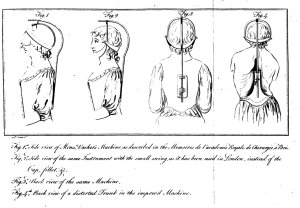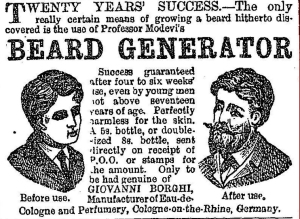In my last post I talked about letters from medics who were seeking jobs. Another second day in the archives yesterday yielded another crop of prospective employees, some of whom this time didn’t even know if there was a vacancy, but applied for it anyway. But another aspect of employment that we don’t often get a glimpse of in the past is that of pay-bargaining.
What happens when, after several years of work, you feel that you’re no longer getting paid what you deserve? Actually there are whole websites devoted to the etiquette of negotiating a pay rise with your boss. There is always the union to fall back on if it all goes wrong. How, though, did people do this for themselves. It was a tricky process. Don’t ask and you risk being stuck with your menial salary. Push your luck and you might end up by offending your employer and losing your position.
A letter from Dr Cockayne, surgeon-apothecary at the Bamburgh infirmary, gives us a brief insight. It’s 17th October 1782, and the doctor has been employed at the Infirmary for a little over six years. Up until now he has been paid regularly but on an ad hoc basis for his attendance on Wednesdays and Saturdays. In the ten years since its opening, the infirmary has witnessed a massive jump in from 206 in 1772 to 1500 in 1782. Small wonder that Dr Cockayne felt a little underpaid! His letter to the Reverend John Sharp reveals the delicate path he had to tread. He began on safe ground:
“Honoured Sir,
I hope you will pardon my boldness in addressing you upon this occasion, nothing but the consciousness of my own insufficiency, and your known candour, and continual kindness shewn to me upon every occasion could ever have induced me to ask so great a favour. At the same time it meets with your Disapprobation that alone will be sufficient to make me think no more of it.
It is now five years since by your kind patronage I was appointed surgeon to your dispensary. I hope during that time I have not neglected my duty but endeavoured to discharge my trust to the best of my abilities. The duties of the dispensary have continually increased year after year, and the vast number of patients admitted this year will shew to every one its great utility and at the same time the increas’d [need] and trouble so great an increase of business must necessarily give me.
If these considerations are of any weight, the favour I am going to ask will not I hope be look’d upon as presumptuous in some addition according to your better judgement in my salary. It was my duty to beg your advice upon this matter. I intended several times to have spoken to you of it when I was at the castle, but had always found myself incapable without some previous notcice to you of my intention. I therefore take this opportunity of addressing you.
I believe entirely upon your goodness and wisdom as to the fitness of my Request which if gained will be an addition to the many undeserved favours already confer’d upon me and a meanes of making me happier and easier in life. If not, I am content and shall still retain for ever a greatfull sense of your goodness in the mean time I beg leave to subscribe myself, honoured sir, your obliged humble servant, W. Cockayne.”
This was a skilful piece of negotiation and the relationship between employer and employed is interesting here. In the first paragraph, for example, he indulged in a little ego-stroking but was swift to mention that he would stop at once if he thought that Dr Sharp would be aggrieved. Sharp is almost a paternal figure, whose approval is continually sought.
Then he moved on and set out his grievances, pointing out the strains that the sheer volume of extra patient numbers had put upon him. The last part of the letter called for humility- and Cockayne had it in spades. Without “wishing to be presumptuous” and relying on Sharp’s “better judgement” Cockayne almost slipped in the fact that he wanted more money. Arguing that he had effectively been too afraid to ask in person, he tried to gain Sharp’s sympathy for his plight. If he got his money, Cockayne would he “happier and easier in life”. If not, he would “still retain a sense of your goodness” and would continue in his role regardless. Clever. But did it work?
No…at least not at once. For several years afterwards Cockayne continued on his ad hoc salary until, in 1785, he was granted an annual salary of £85 – a not insubstantial sum. Interestingly, though, he remained on that salary until at least 1810, the only increment being the addition of an extra 10 shillings in the 1790s – hardly enough to make a material difference.
So another story of the twists and turns of employment for medical practitioners in the eighteenth century. Who knows what other little gems are lurking in the archives.











